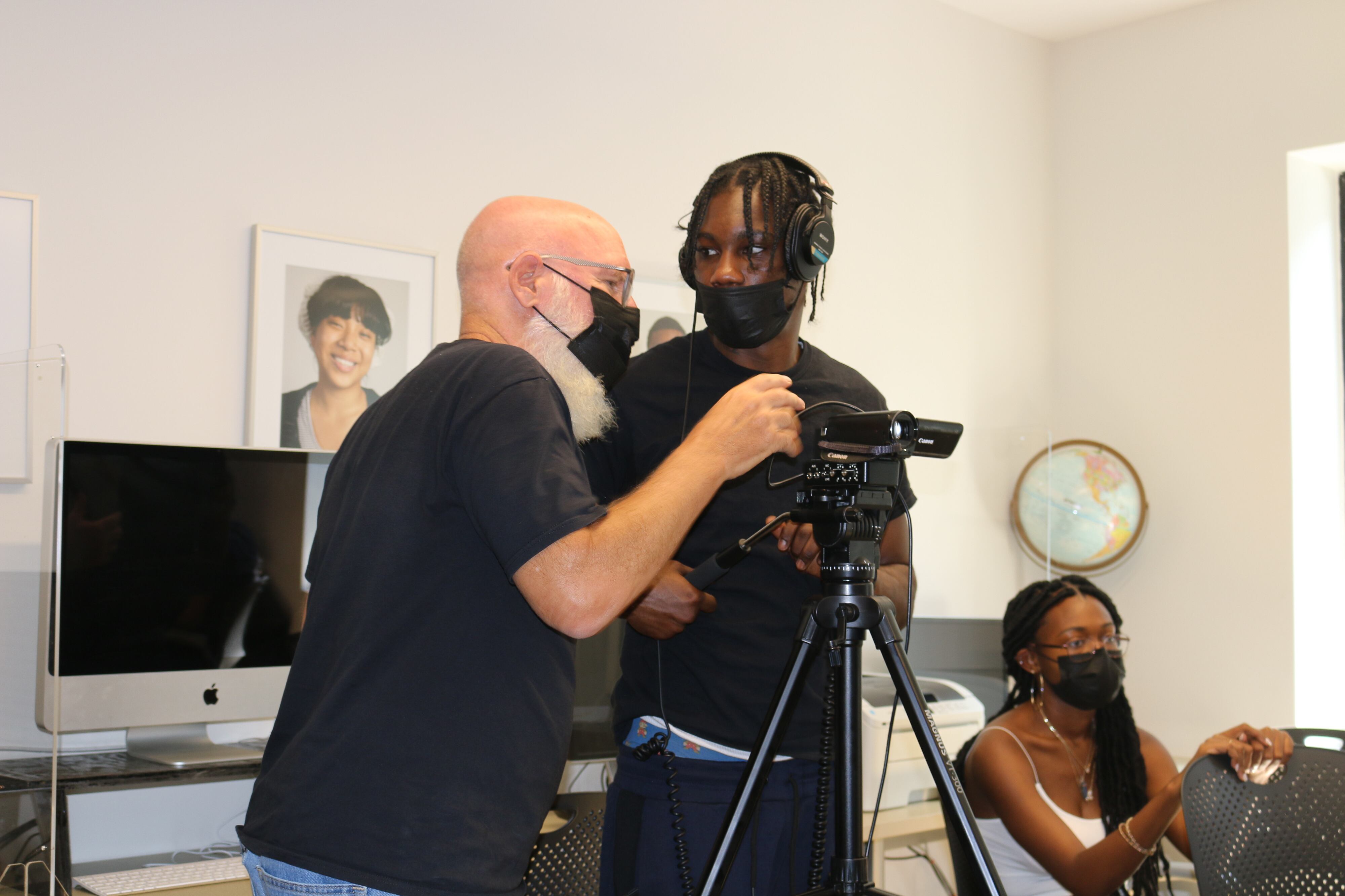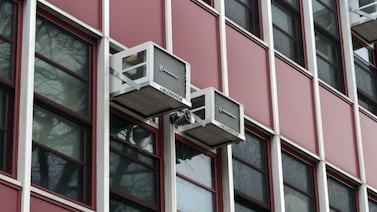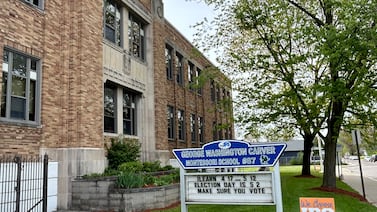Maria Bonilla began to cry after failing for the sixth year in a row to get a job through New York City’s Summer Youth Employment Program. She had applied annually through its lottery-based system since turning 14.
“I really wanted to help my parents with rent and everything,” Bonilla said. “They were struggling.”
Bonilla finally landed a spot when she was 21 and was placed at a Staples store in Brooklyn’s Cypress Hills, where she lived at the time.
“I always wanted to keep myself occupied,” said Bonilla, who is now 27 and works as a medical assistant in Arizona. “I wanted to get some time [and] experience in the summer instead of being in the park hanging with the wrong crowd.”
Despite more attempts, Bonilla never got back into the program, known commonly as SYEP. Just half of the people who apply get spots in the program, which pairs people ages 14-24 with summer jobs at minimum wage, or $15 an hour. But those odds could become less of an issue under a new plan being floated by Mayor Eric Adams.
Adams wants to expand the $170 million program as part of a broader plan he announced last month to combat gun violence. He has revealed few details, but aims to identify a paid internship “for every young person who wants one” for this summer, he said. The city would forge partnerships “with large businesses and corporations across the city” to make that happen.
The program, created in 1963, is the nation’s largest summer jobs program for youth.
On Thursday, city officials said the number of seats and cost of an expanded jobs program have not been determined. The mayor’s office and the Department of Youth and Community Development, or DYCD, which administers the program, is getting feedback and ideas from providers, according to a DYCD spokesperson.
Adams is working with DYCD “to determine the most effective ways to deliver as many jobs and opportunities to young people as possible,” said Lauren Bale, a City Hall spokesperson.
Scaling up to meet ‘universal’ demand
The news has been exciting for SYEP providers, who are community-based organizations that receive city funding to provide job skills training and pair young people with work in such fields as retail, nonprofits, food service, legal services, and government agencies. While many have long hoped for an expansion, it won’t come easily and will need significant financial investments from the city, they said.
“It’s a very important policy position for him to strike early in his mayoralty,” said J.T. Falcone, senior policy analyst for United Neighborhood Houses, or UNH, which represents settlement houses that support summer youth programs. “We just wanna make sure we hammer out all of the details.”
Since 2018, 156,500 youth, on average, applied for the program each year, according to annual city reports, excluding 2020 when the program was slashed because of the pandemic.
To meet “universal” demand, Falcone’s organization believes the city must make 150,000 spots available — roughly double what the program has offered since 2018 (excluding 2020).
Falcone believes that an expansion should include a boost in how much the city pays providers for each youth they are pairing with jobs, which currently ranges from $400 to $1,000, depending on the type of program. (Some programs are reserved for participants who live in public housing or are justice-involved, for example.) This would ensure that organizations can offer more than minimum wage to attract qualified people who can work with young people, especially as various industries are struggling to recruit and hire.
It will also allow providers to hire many more staffers in order to spin up a dramatically larger program, Falcone said.
Last summer, Falcone recalls getting many phone calls from providers who were struggling to find job sites that would agree to take on kids. The program eventually served more youth than ever before in its history — but it took a lot of effort.
“If I think about the calls I got last summer in a bit of panic, I anticipate asking them to double those numbers over the course of a few months is gonna take really hard work,” Falcone said.
UNH plans to propose a gradual expansion, starting with 100,000 spots this summer, 125,000 in the summer of 2023 and finally, 150,000 in the summer of 2024.
A universal program would be “extremely hard” on providers to pull off for this summer but not impossible, so long as there’s enough money in the budget and providers are getting enough support from DYCD, Falcone said.
Lowell Herschberger, the director of career and education programs at the nonprofit Cypress Hills Local Development Corporation, is not as optimistic. He believes a universal program is a “fabulous idea,” but believes this summer may be too soon because it would be too difficult to staff up that rapidly.
One challenge in growing seasonal programs, such as SYEP, is working with temporary or seasonal employees, both Herschberger and Falcone said. Those employees leave after a few months, making it tough to retain “institutional knowledge” about the program or build relationships with job sites that can offer work to young people, Herschberger said, whose summer jobs program last year served 479 youth.
One fix to that issue is creating programming that could keep more staff on full time. Herschberger said the city should consider expanding CareerReady and Work Learn Grow — established by the de Blasio administration — which connect children to internships and job skills training during the school year.
That allows providers to keep seasonal staff longer, and more importantly, gives young people more opportunities during the school year, said Herschberger and Falcone.
A DYCD spokesperson said the administration is reviewing those programs “to determine the best investments to make” for city youth.
Youth advocates want a say
Expanding the program could also be an opportunity to consult with more young people about what they want to see, youth advocates say.
Kai-Lin Kwek-Rupp is a 17-year-old senior who, as an advocate at Teens Take Charge, has pushed for expanding the summer youth jobs program. She said she’s heard from many participants who felt they weren’t placed in jobs that piqued their interest. That’s why she believes the Adams administration should consult young people to understand what kinds of opportunities would attract them to the program.
“I think there is an opportunity to create a program where participants are going to programs that really suit their interests and their passions,” Kwek-Rupp said.
A DYCD spokesperson said the agency has “engaged and will continue to engage young people and advocacy groups.” Participants have been surveyed and attend focus groups to “help inform programming,” the spokesperson said.
Kwek-Rupp declined to say whether Teens Take Charge has approached the mayor’s office about his SYEP plans. But she hopes that the administration considers the program as more than a violence prevention initiative.
Adams’ gun violence prevention plan justifies expanding the jobs program as a way to reach “young people long before they turn to guns and violence.” One recent study that examined participants from 2005 through 2008 found that those enrolled in SYEP were 17% less likely to be arrested in those summers compared to youth who applied but were not accepted. However, the study did not find the program had any significant impact at reducing arrests or convictions five years after those summers.
“It’s clear that SYEP does reduce violent crimes, but also, SYEP is so much more than that, and to reduce it to a point in a gun violence prevention program seems to make these assumptions about who is participating and creating this idea that the only reason we’d have such a program is to prevent violence,” Kwek-Rupp said.





